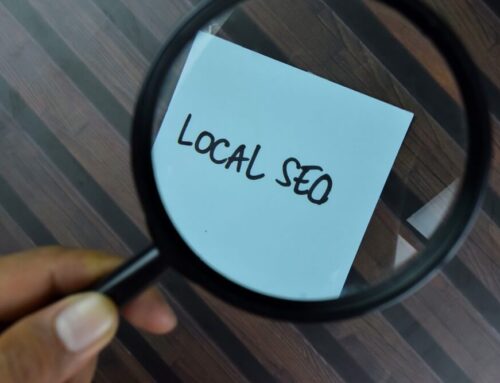Google is aiming to be the end destination of their users’ journeys. This, more than anything, defines major SEO trends for 2020.
The SEO landscape is very dynamic. Sure, some things stay the same: put relevant keywords in your titles, make it a priority to optimize for mobile users, etc.
But other things continue changing in a never-ending spiral. This year, Google, along with other huge platforms, is trying more and more to be the end destination of their users’ journeys.
This, more than anything, defines major SEO trends for 2020, since now we need to find the best ways to stay effective within the framework created by Google.
1. Zero-click searches are the new normal
Thanks to such SERP features as featured snippets, Google’s Local Packs, Knowledge graphs, and so on, more than half of all searches are now “zero-click searches.” That means that the user’s query is answered on the SERP itself, without them having to click away anywhere.
What do we do?
- Don’t panic. Consider what kind of searches these are: those are people looking for your address and phone number. Or people looking for an answer to a quick and easy question. Those particular clicks probably wouldn’t convert anyway, and so shouldn’t be fretted over.
- Identify what keywords can actually bring you clicks. Using Rank Tracker in conjunction with your Google Search Console account, you can analyze what keywords of the ones you’re optimizing for actually bring you clicks. That way, you save yourself a whole lot of time and effort optimizing for queries with keywords such as “when,” “how many,” “what year,” and so on.
Those are vital for content, of course, but shouldn’t be the focal point of your SEO efforts.
2. Do your best to optimize for Rich and Featured snippets
In the situation where zero-click searches are so prevalent, the information shown on the SERP itself is now more important than ever. Two great ways to stand out is to get Rich or Featured snippets.
Rich snippets — those that, in addition to title and description, show images, stars for reviews, prices for products, etc. — are easier to get, but they will also bring lower CTR improvements compared to a Featured snippet. Your result will be more noticeable, though, even if your position in a SERP will remain the same.
Featured snippets — an entire block of information that is shown at the top of a SERP — bring great increases in CTR. But getting one is quite a bit more tricky.
What do we do?
- Getting both of these types of snippets requires, most of all, that your data be structured. Turn to WebSite Auditor and check if the data on your site is already structured.
- If it isn’t, check out this guide on how to use structured data.
- Use Rank Tracker to find opportunities for Featured snippets. Don’t just research the keywords you’re ranking for. Look out specifically for keywords for which your competitors already have a Featured snippet.
Always keep in mind that nothing, including ranking first, actually guarantees you getting Rich or Featured snippets. At the same time, the potential gains are absolutely worth optimizing for them.
3. Local SEO is changing
A huge number of the aforementioned zero-click searches are local searches for which the results are shown on the SERP itself, in so-called Local Packs. For mobile devices, a single Local Pack might take up as much space as an entire SERP shown to a user.
What do we do?
You can cover a vast number of searches, mostly those containing keywords such as “near me” or “address” and “phone number” in one fell swoop, by creating a Google My Business page for your company.
But that should only be the beginning of your efforts. A large number of searches will not end on Local packs. People who want to compare products, look up more detailed information, etc. will still go on your website, and that’s where the traditional SEO practices become important.
So, having a solid backlink profile is paramount. Look up what kind of backlinks your competitors get, and try to get those for yourself.
A specific feature of local SEO is that you need to have not just any backlinks, but the ones that Google deems locally authoritative.
And of course, remember to track your local ranking performance. Keep in mind that the least change in location will influence the kind of results that the user will get. To look up rankings for keywords down to a street and a house, you should use a keyword research tool like Rank Tracker.
For more in-depth instruction, check out this local SEO guide.

4. The machines are here to stay
For years now Google’s been using learning algorithms to improve their users’ experience with search and help avoid keyword-stuffed webpages. In 2020, this will be more important than ever with Google’s latest algorithm named BERT.
Now, as far as we know, Google uses three mechanisms: first is Neural Matching, which figures out the meaning of the query. Second is RankBrain, which adjusts the SERP’s relying on the collected data about users’ behavior. The third, the newly-implemented BERT, is the algorithm that is used for analyzing the structure of a search to better understand the context in which keywords are used.
What do we do?
As far as Neural matching or BERT go, there isn’t much we can do about those algorithms — Neural matching is really Google’s inner kitchen, and BERT really requires you to write good content.
But RankBrain really should be accounted for very carefully. The goal here is not simply to rank for whatever keyword. Now, and more and more in the future, intent matching is paramount for creating successful content.
Because right now, simply ranking without matching intent will cut you off from a huge number of SERPs.
To understand the correct search intent, you need to keep your hand on the pulse of what’s ranking right now. Using Rank Tracker software, monitor the results to see what content exactly Google considers relevant for the searches you want to rank for.
After properly determining the intent behind the search queries you want to rank for, create the content to match your users’ intent in their search.
5. Brand building should be a priority
One noticeable trend for any marketer working today is that organic social is pretty much dead. While paid advertising still works brilliantly for social, the fact that more and more companies are doing it creates a real trend where ROI for paid ads will be decreasing.
It’s obvious at this point that paid ads will become more prevalent and expensive for everybody who wants to grow through that avenue. In these conditions, brand awareness and brand building come to the forefront of digital marketers’ efforts. On the other hand, linkless mentions are becoming more and more important, with Google and Bing confirming those are used as ranking signals.
What do we do?
First and foremost we need to go and build relevant mentions. And for 2020, we need to pay as much attention to building quality link profiles, as handling and managing linkless brand mentions.
Utilizing what is called social media listening, for example, will allow you to monitor every mention of not just your brand, but even the type of service/product you provide.
That allows you to, first of all, engage with your clientele directly. Second of all, it’s giving you an opportunity to build brand awareness through publicly providing customer care.
It’s helping inform the people who are actually interested in your product about any campaigns or promotions you might have going on, etc. Also you can look up where your main competitors are mentioned and start a campaign to get mentioned there as well.
By utilizing social listening tools marketers are able to build brand awareness through direct interaction with their customer base, so that should not be thrown out of any digital marketer’s agenda.
Conclusion
Every time marketers think we got this SEO thing down, the rules start to shift and change. A great example is how local SEO changed. Today, having Google My Business is becoming more important for some local businesses than having a website, and this is just a symptom of a larger trend.
We need to always keep our hand on the pulse, then, and adjust our work to the new challenges we’re facing, to provide the best results possible for our clients.
SOURCE: Search Engine Land










